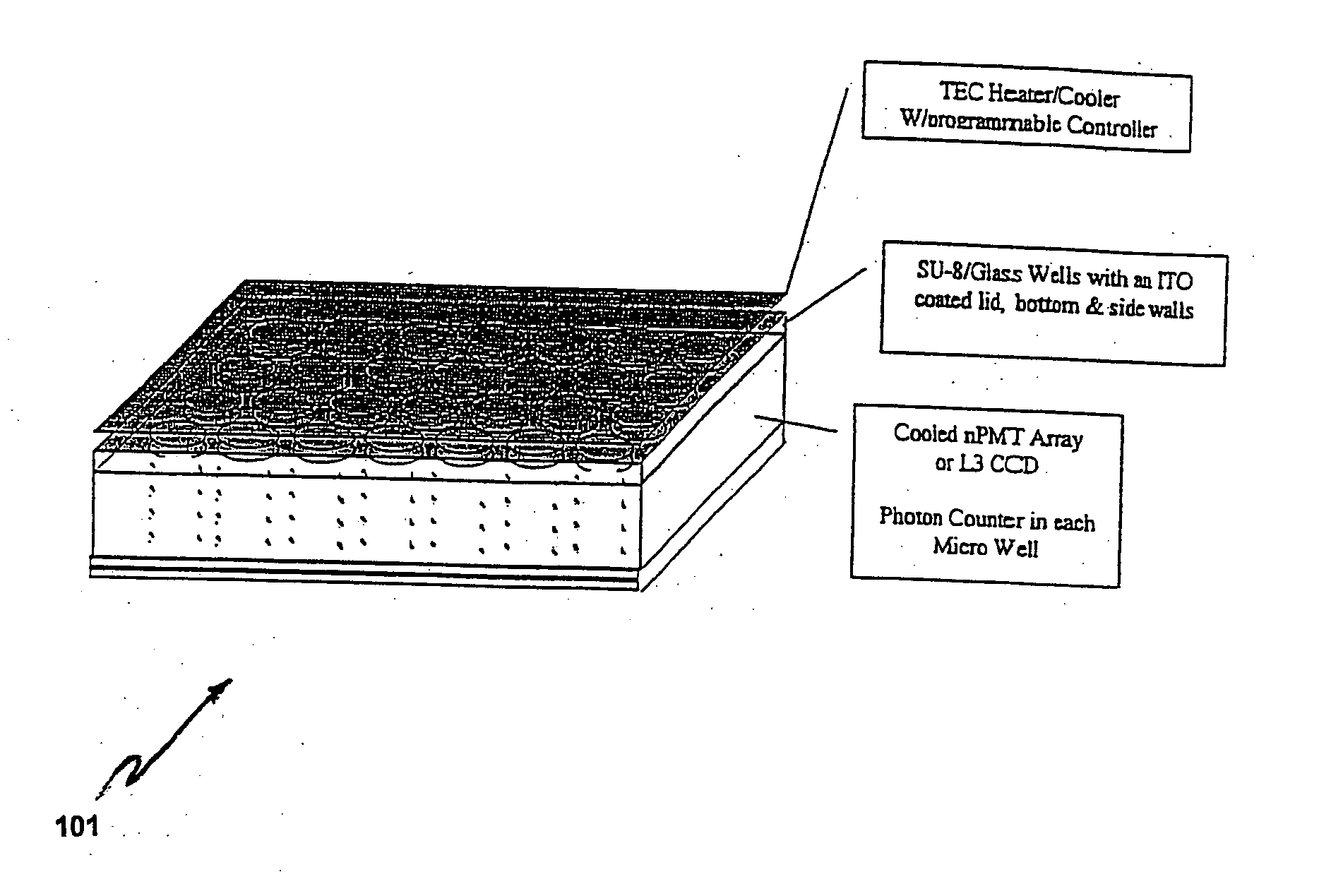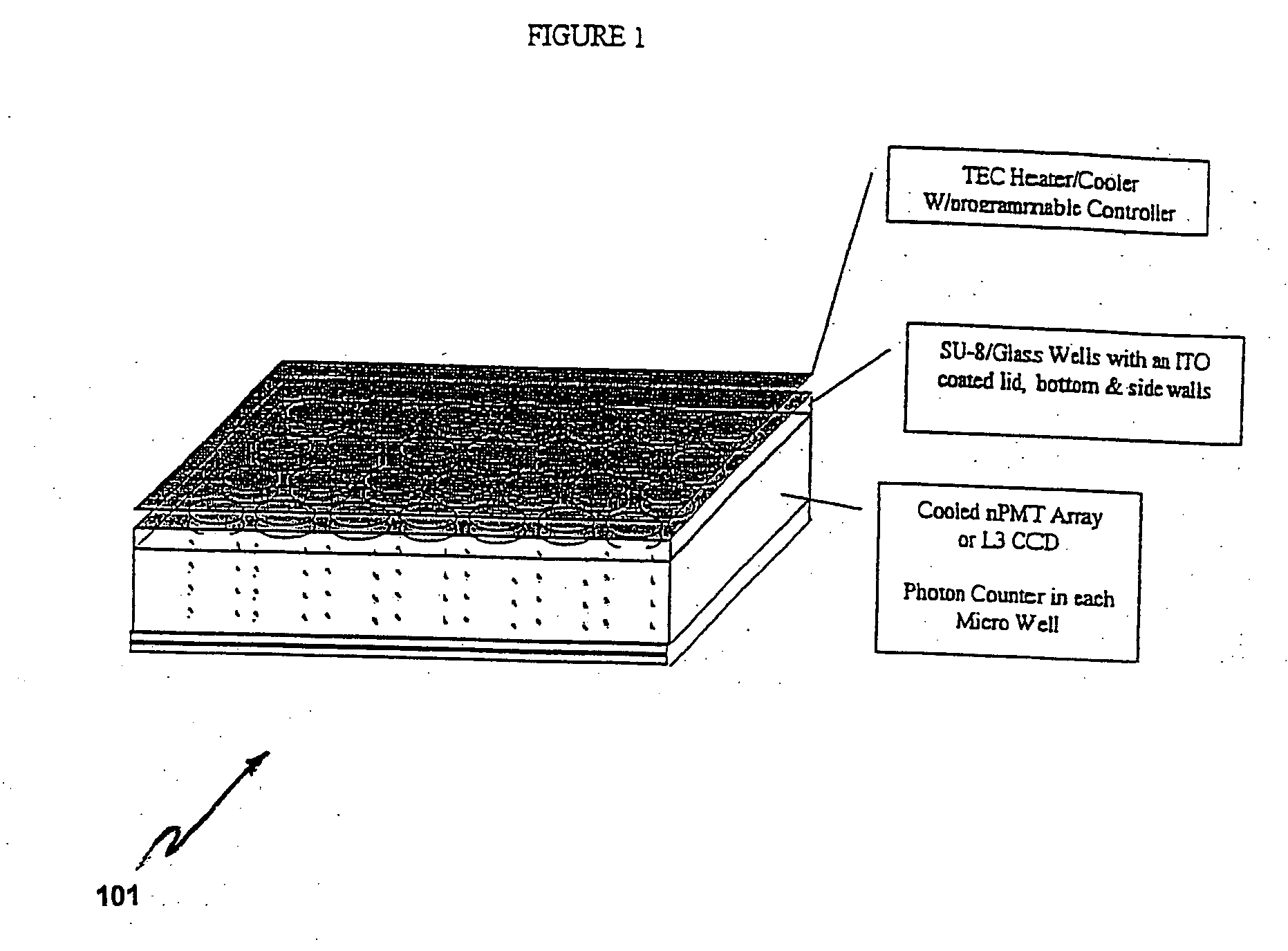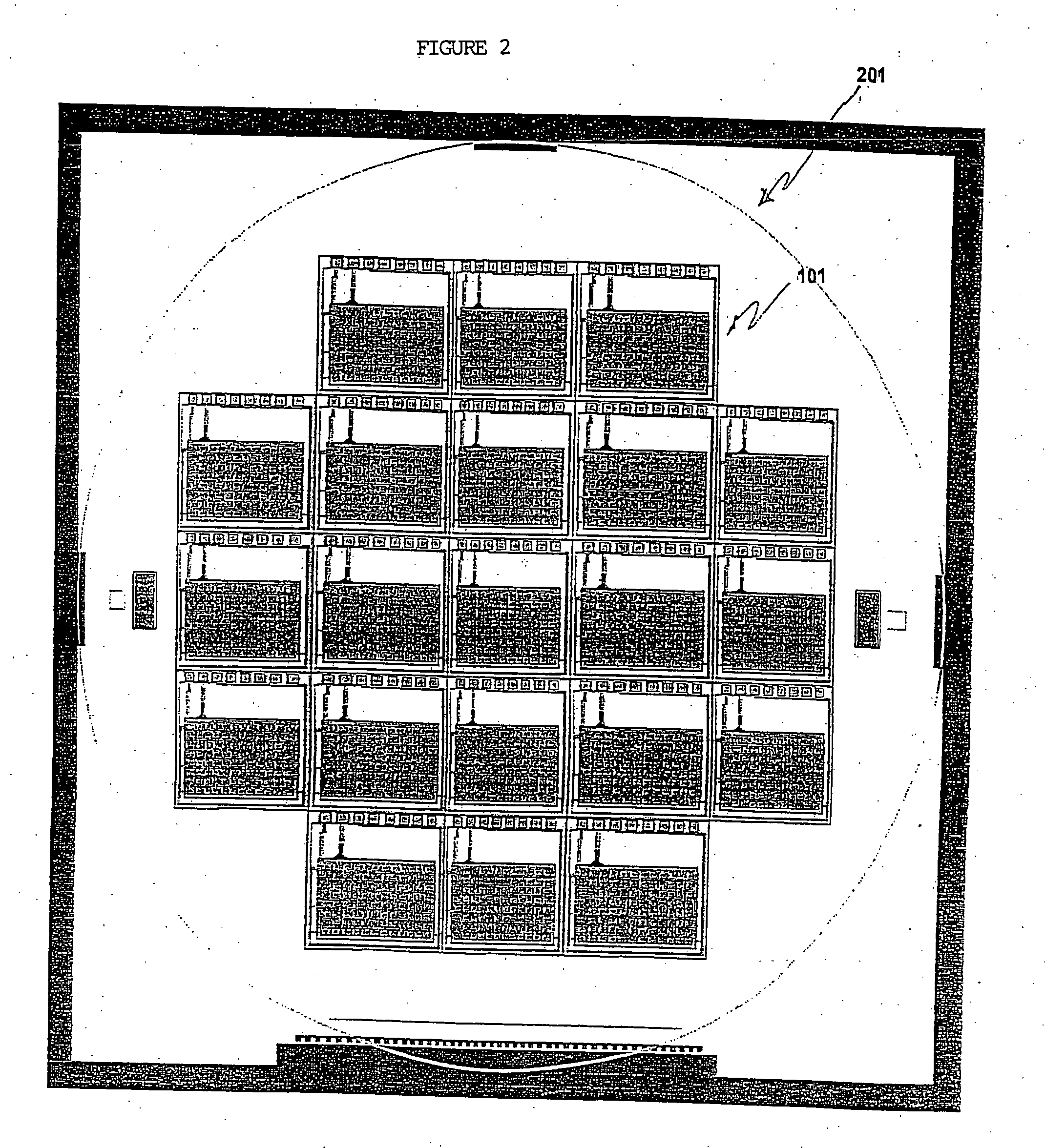Thermo-controllable chips for multiplex analyses
a technology of multiplex analysis and controllable chips, applied in the field of miniature instruments, can solve the problems of high electrical power required to operate the instrument, intrinsic limitations of the conventional instrument, and the inability to perform a large quantity of pcr with the conventional thermal cycler, and achieve the effect of simplifying laborious and expensive procedures
- Summary
- Abstract
- Description
- Claims
- Application Information
AI Technical Summary
Benefits of technology
Problems solved by technology
Method used
Image
Examples
example 1
[0143] Amplification of a target nucleic acid, namely a fragment of the G6PDH gene, is performed using a chip of the present invention. The reaction mixture containes G6PDH template, a pair of upstream and downstream primers specific for the template, dNTPs, and DNA polymerase.
[0144] The amplified products are detected with SYBR Green I that binds preferentially to double-stranded DNA molecules (see, FIG. 20). FIG. 21 depicts the SYBR Green staining of DNA molecules appeared at the three different thermal stages of one PCR cycle. As is shown in FIG. 21, staining of the DNA is most intense at the annealing step (e.g., at 45° C.) because most of the DNA molecules assume a double helical structure. By contrast, very little SYBR Green staining is detected at the denaturing step where the temperature is raised to e.g., 95° C. At about 72° C. where primer-directed extension is taking place, a moderate amount of staining is detected. The amount of SYBR Green stain detected throughout one ...
PUM
| Property | Measurement | Unit |
|---|---|---|
| Temperature | aaaaa | aaaaa |
| Volume | aaaaa | aaaaa |
| Volume | aaaaa | aaaaa |
Abstract
Description
Claims
Application Information
 Login to View More
Login to View More - R&D
- Intellectual Property
- Life Sciences
- Materials
- Tech Scout
- Unparalleled Data Quality
- Higher Quality Content
- 60% Fewer Hallucinations
Browse by: Latest US Patents, China's latest patents, Technical Efficacy Thesaurus, Application Domain, Technology Topic, Popular Technical Reports.
© 2025 PatSnap. All rights reserved.Legal|Privacy policy|Modern Slavery Act Transparency Statement|Sitemap|About US| Contact US: help@patsnap.com



